
First drive: The Skoda Kodiaq vRS is a refreshingly understated take on the performance SUV
By Motor Match • 10/09/2019
We got behind the wheel and headed to Spain to see if this sportier Kodiaq can deliver.

What is it?
Think of Skoda and what springs to mind? Practical estates perhaps, or maybe even a series of rugged SUVs. Well, the Czech company also has a bit of form with making incredibly low-key yet punchy performance versions of its production cars and this – the Kodiaq vRS – is a sporty take on the brand’s popular seven-seater.
Despite being revealed some time ago, this is the first chance that we’ve had to get behind the wheel and we headed to Spain to see if this sportier Kodiaq can actually deliver.
What’s new?
Although the exterior of the Kodiaq vRS may appear relatively close to the standard car, Skoda has added a little sparkle to many of the vehicle’s components to lift the whole driving experience. Yes, a new engine has been added, but it has also retained the excellent practicality for which the standard car is famed.
It’s a contrast, therefore, that this is a car which can seat seven in comfort yet is also the holder of the fastest time for a seven-seater SUV around the Nürburgring.

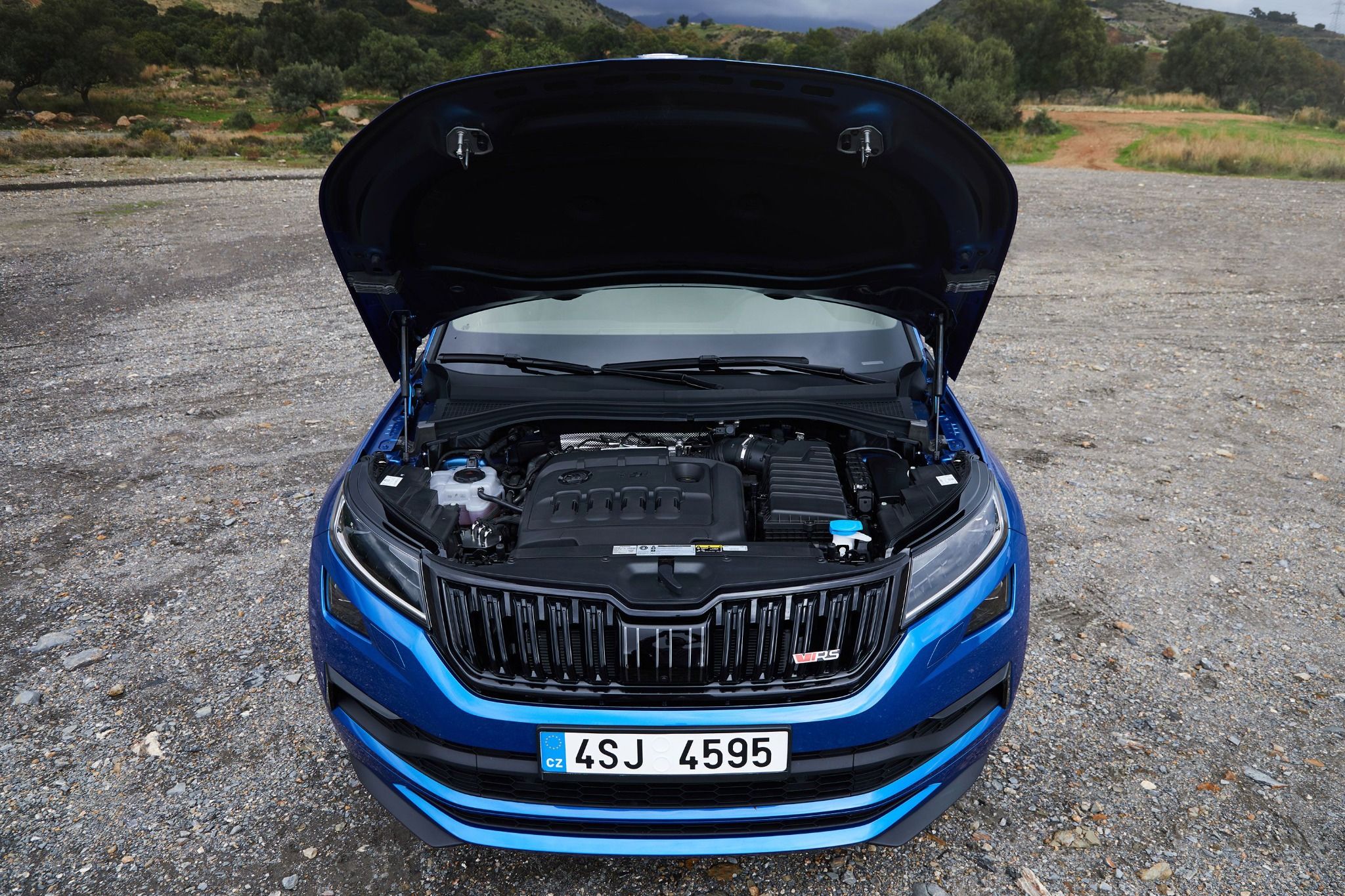
What’s under the bonnet?
It may come as a surprise to some that it’s a diesel rather than a petrol motor, given the trends of late, but it makes sense in a car like this – a relatively large and heavy family seven-seater needs plenty of pushing power while retaining decent economy figures, and diesels are still spot-on for this. It’s a 2.0-litre bi-turbo unit, pushing out 237bhp and a good slug of torque – 500Nm, in fact. Drive is sent to all four wheels via a seven-speed DSG gearbox, and Skoda claims that the Kodiaq will hit 60mph from a dead stop in 6.8 seconds before reaching a top speed of 136mph.
It’ll also return a claimed 35.3mpg combined (generated under new WLTP testing cycles), while emitting 167g/km CO2.
What’s it like to drive?
Previous vRS models had a deceptive way of delivering their power, and the Kodiaq is no different. Accelerating hard from a standstill doesn’t feel all that quick initially, until you look down at the speedometer and realise you’re travelling a fair bit faster than you expected. This is continued by the impressive mid-gear punch – the Kodiaq pulls really strongly and there’s more than enough go for overtaking safely and securely.
The ride is firm at low speeds – although that’s to be expected as Skoda has specifically adapted the car’s chassis control system for the vRS – but the by-product is excellent body control in the bends. Add to that the added traction afforded to it by the all-wheel-drive system, and the Kodiaq vRS feels like a much smaller car to drive quickly than it actually is, and that’s no bad thing at all.
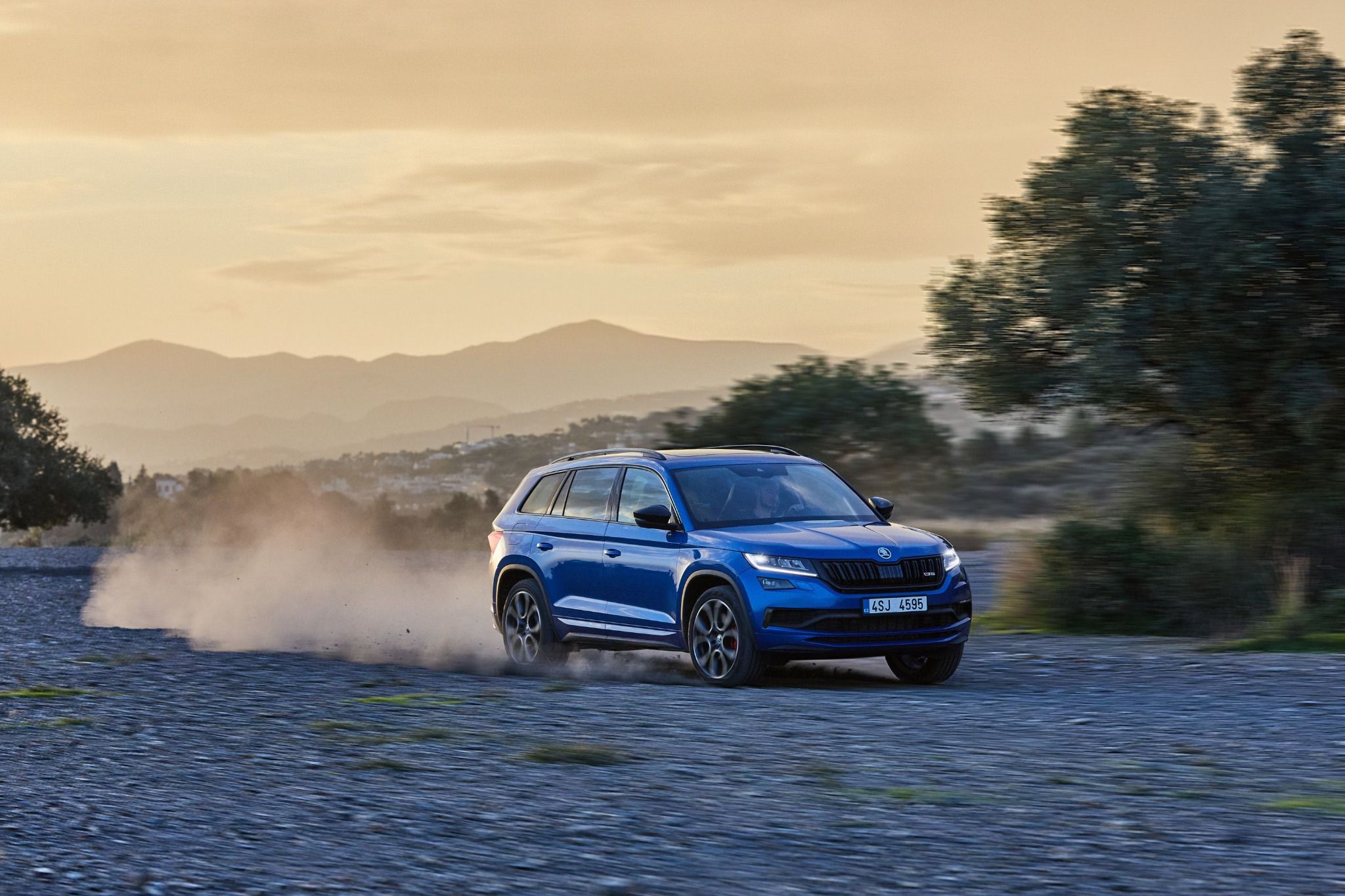
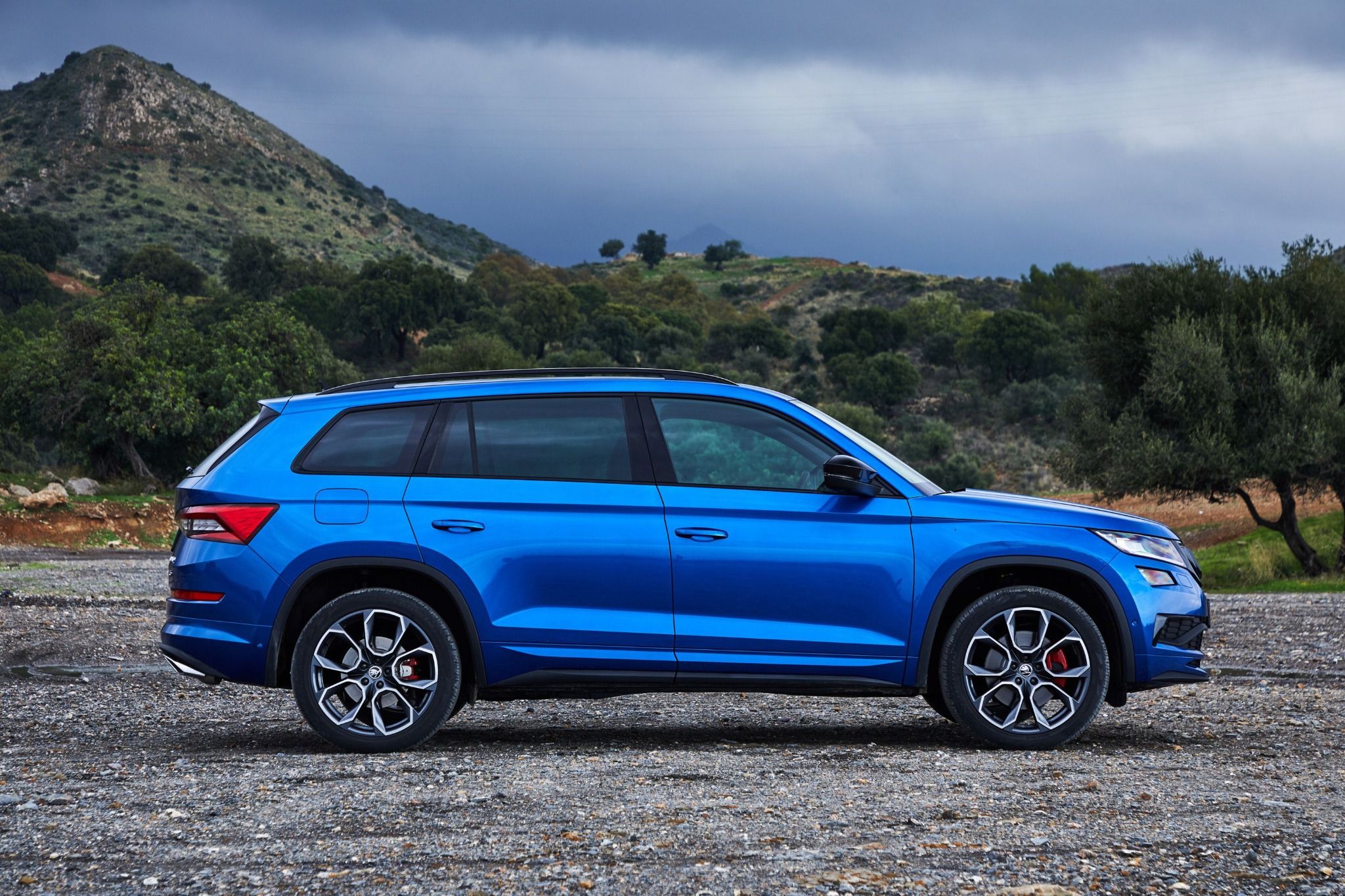
How does it look?
There’s little to make the Kodiaq vRS stand out against its regular stablemates, which is likely to divide opinion. For those who like to stand out and make an entrance, the car’s subtle badges and lack of flared arches won’t appeal all that much. However, people who prefer to fly a little under the radar will no doubt appreciate the way the Kodiaq vRS does, in truth, look just like any other Kodiaq.
Yes, you do get red brake callipers behind 20-inch ‘Xtreme’ alloy wheels, but this Kodiaq’s appeal is in its lack of self-importance. It’s a great design, though – make no mistake about that. It looks impressive both on the move and parked up. In fact, we’d argue that it’s all the better having not been messed with too much.
What’s it like inside?
The fundamentals we loved about the regular Kodiaq remain in the vRS, with seven comfortable seats and large windows making for a cabin that does feel genuinely spacious. Things are turned up a notch in the vRS thanks to quilted Alcantara door cards, heavily bolstered sports seats (also trimmed in quilted Alcantara) and swathes of carbon-fibre-effect trim. Could this interior feel a little more special in what is a £43,000 car? Absolutely. But what has been done helps to elevate the vRS’ cabin just a touch above the regular Kodiaq’s.
You’ve still got all the practicality benefits that have won the Kodiaq so many followers too. The boot offers 270 litres when all seats are up, going to 630 litres with five pews in place. It tops out at a cavernous 2,005 litres with all seats folded flat – and all this in a car capable of hitting 60mph in under seven seconds. Not bad.
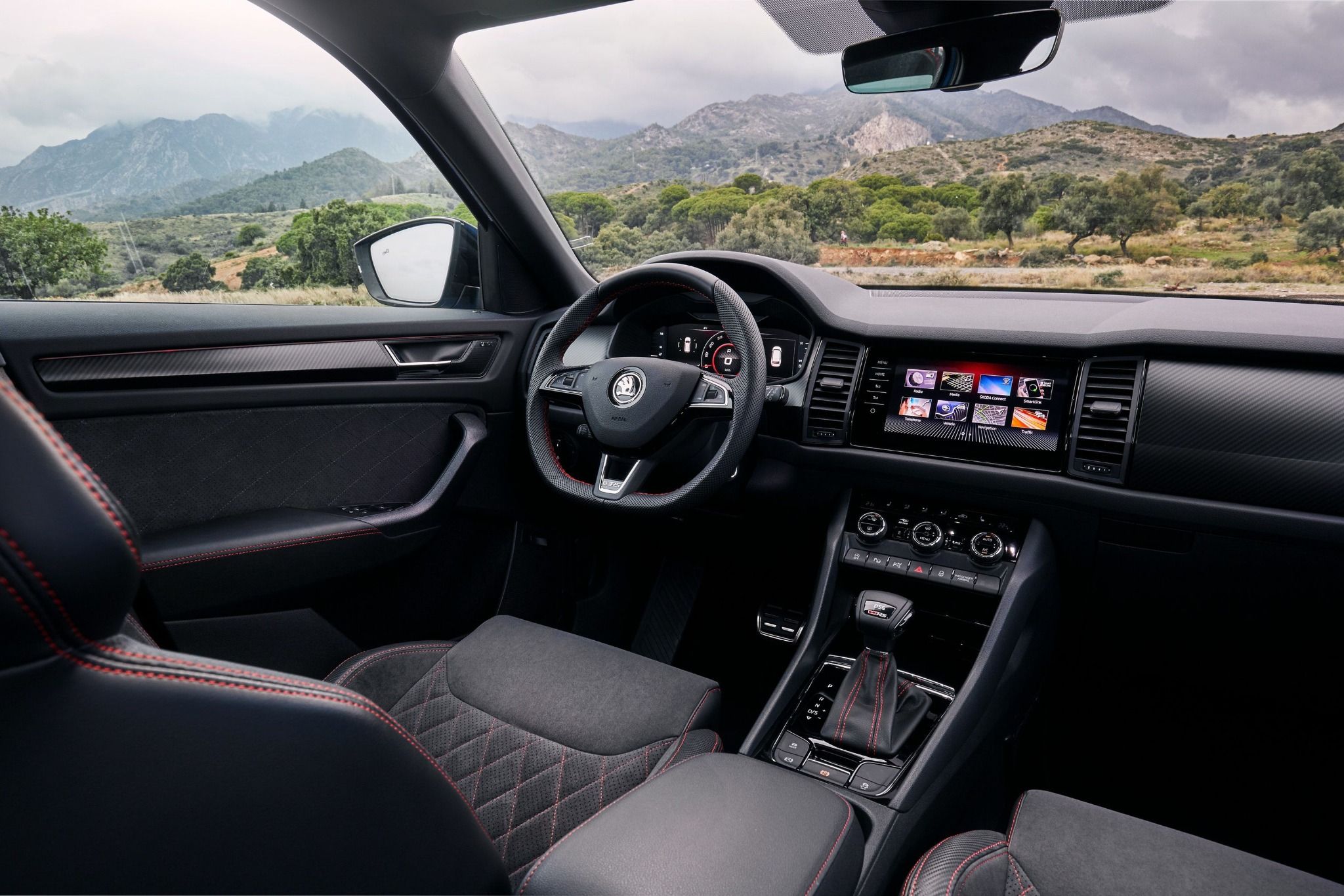
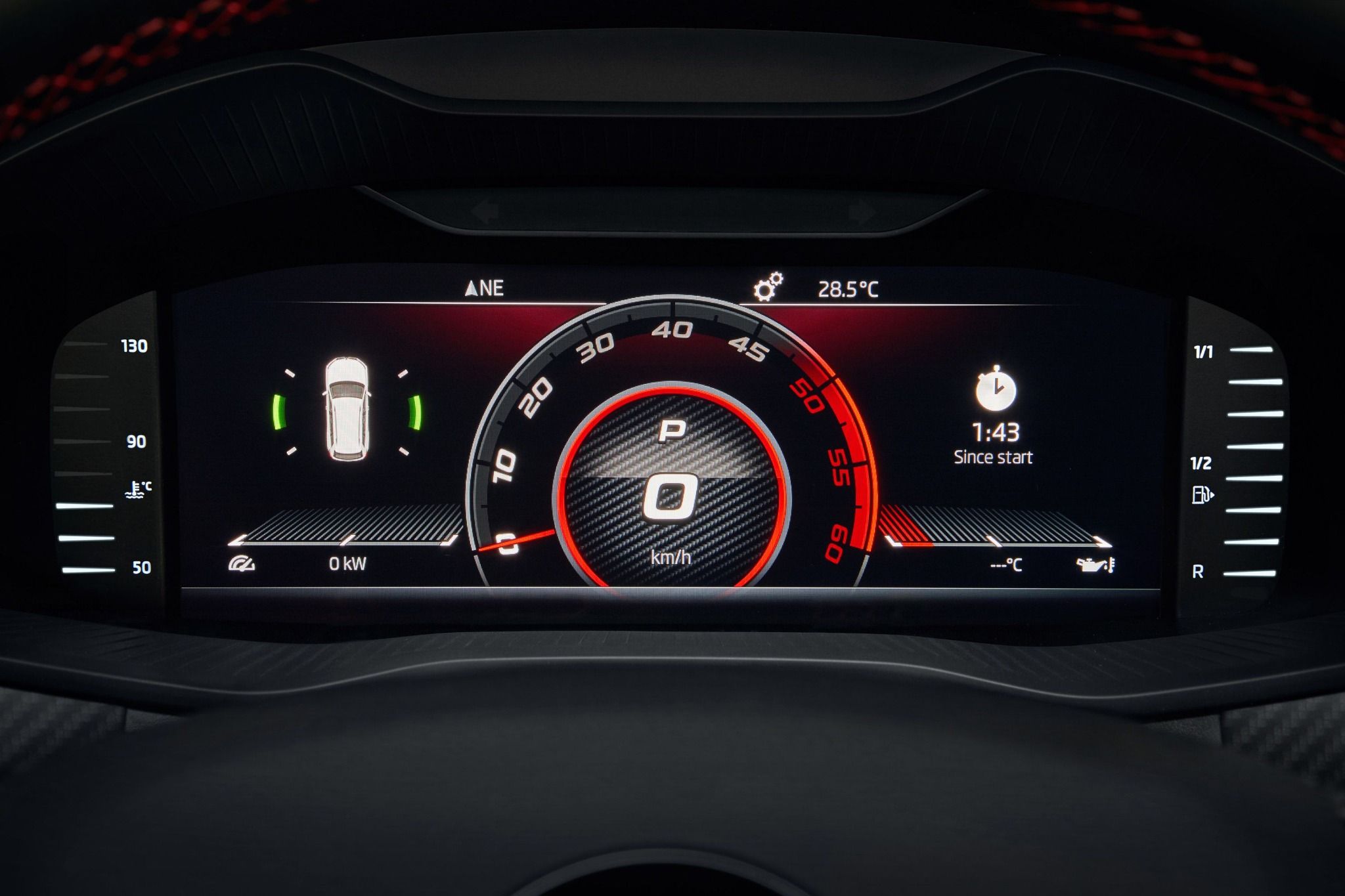
What’s the spec like?
As a result of the vRS sitting at the top of the Kodiaq food chain, Skoda has included all manner of equipment as standard, including those 20-inch alloy wheels as well as LED headlights and tail lights. Gloss black exterior trim pieces come as part of the car’s overall cost, along with tri-zone climate control, front and rear parking sensors and an area view camera.
The main infotainment offering is centred around Skoda’s Columbus system, which incorporates satellite navigation and media functions. There’s also the brand’s interpretation of the Virtual Cockpit feature that we’ve seen on other Volkswagen Group vehicles. It works well here, and is clear and easy to read.
Verdict
The Kodiaq vRS has been a bit of a push for Skoda. The regular Kodiaq is doing well, so why offer a performance version? In truth, it makes sense. This vRS takes all the best bits of the Kodiaq – practicality, build quality, spaciousness – and adds the ability to enjoy a quiet, twisty road should the chance arise. It’s there for people who want to be able to get five kids, their gear and the dog all in the car but still want to have a little time for themselves behind the wheel. It’s just a shame about the car’s high price – had it been a touch lower, this would have been an even more compelling prospect.
You may also like…